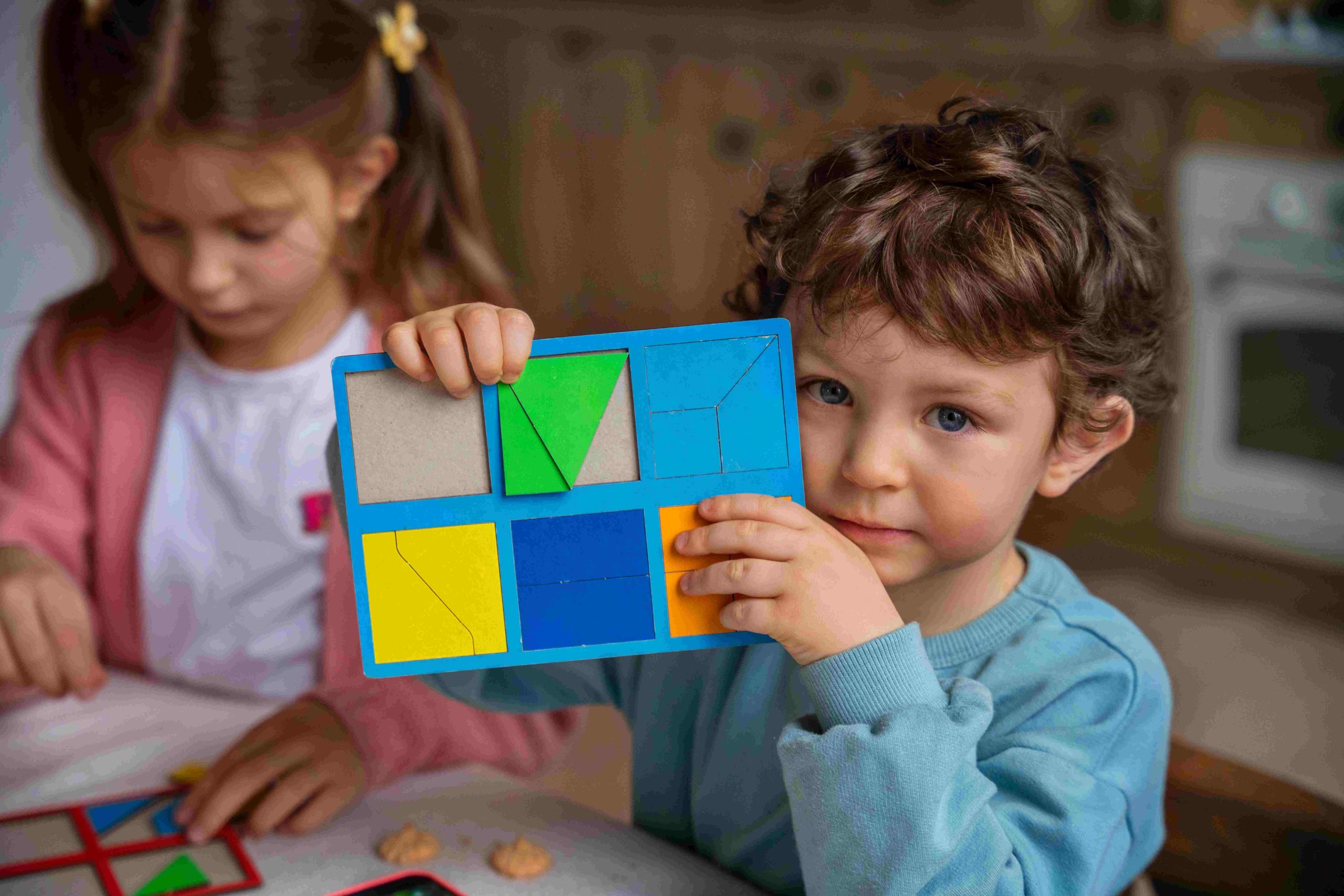
The Power of Preschool Math: How Geometric Shapes Help Preschoolers Develop Essential Skills
The Benefits of Learning Geometric Shapes at an Early Age
Preschoolers are natural explorers, and geometric shapes offer a world of discovery that can captivate their imaginations. From triangles and squares to circles and rectangles, preschoolers can learn to recognize and name these shapes, opening up a whole new world of possibilities for them.
Improved Spatial Awareness
Learning to recognize and understand geometric shapes helps preschoolers develop their spatial awareness, which is an essential skill for many aspects of life. Spatial awareness helps them understand their position in relation to objects and people around them and improves their ability to navigate and orient themselves in space.
Enhanced Problem-Solving Skills
Learning to recognize and categorize geometric shapes helps preschoolers develop problem-solving skills. This helps them analyze and break down complex problems into smaller, more manageable parts, leading to more effective problem-solving abilities.
Improved Memory and Concentration
Learning to recognize and name geometric shapes helps preschoolers develop their memory and concentration skills. By using their memory to recall the names of different shapes, preschoolers are developing important cognitive abilities that will serve them well throughout their lives.
Introduction to Mathematical Concepts
Learning geometric shapes at an early age helps preschoolers become familiar with mathematical concepts such as symmetry, angles, and patterns. This lays a foundation for more advanced mathematical concepts as they progress through their education.
How Geometric Shapes Help Develop Social and Emotional Skills
In addition to the cognitive benefits, learning geometric shapes can also help preschoolers develop important social and emotional skills.
Encourages Cooperation
Learning geometric shapes in a group setting encourages preschoolers to work together and share ideas. This promotes cooperation and collaboration, helping them develop important social skills.
Fosters Creativity
Geometric shapes provide preschoolers with a blank canvas on which to create their own unique designs. This encourages creativity and helps them develop their own sense of style and individuality.
Boosts Confidence
Learning to recognize and name geometric shapes helps preschoolers develop a sense of accomplishment and pride in their abilities. This boost in confidence can help them feel more comfortable expressing themselves and participating in group activities.
Encourages Positive Behaviour
Learning geometric shapes helps preschoolers develop a sense of order and structure. This promotes positive behavior and helps them learn to follow rules and routines, which is an essential skill for success in school and later in life.
How Parents and Educators Can Help Preschoolers Learn Geometric Shapes
Now that we’ve explored the benefits of teaching geometric shapes to preschoolers, let’s look at some practical ways that parents and educators can help preschoolers develop these important skills.
Play with Geometric Toys
Toys such as blocks, puzzles, and shape sorters provide excellent opportunities for preschoolers to explore geometric shapes. By playing with these toys, preschoolers can learn to recognize and name different shapes, and develop their problem-solving skills.
Use Visual Aids
Using visual aids such as posters and flashcards can help preschoolers learn geometric shapes in a fun and engaging way. These can be hung on walls or used during circle time to help reinforce the names and characteristics of different shapes.
Incorporate Shapes into Daily Life
Encourage preschoolers to look for and recognize geometric shapes in their everyday environment. For example, they can point out shapes in the playground or during a walk in the park.
Play Shape Games
Games such as “I Spy” and “Shape Bingo” can be a fun way to help preschoolers learn about geometric shapes. These games can be played during circle time or at home with family members.
Read Shape Books
There are many books available that focus on geometric shapes and can help preschoolers learn about them in a fun and interactive way. Reading these books together can also promote early literacy skills.
Additional Tips for Parents and Educators
- Make learning fun by incorporating games, songs, and hands-on activities.
- Use real-life examples to help preschoolers understand how geometric shapes are used in everyday life, such as in buildings, furniture, and household objects.
- Allow preschoolers to experiment with different materials, such as playdough, clay, and paint, to create their own geometric shapes and designs.
- Provide positive reinforcement and praise for their efforts and accomplishments.
- Remember that every preschooler learns at their own pace and in their own way, so be patient and encouraging.
The Benefits of Learning Geometric Shapes for Preschoolers
Learning geometric shapes may seem like a simple concept, but it has a range of benefits for preschoolers.
Cognitive Development
Learning geometric shapes helps preschoolers develop their cognitive skills by improving their ability to recognize and remember patterns, understand spatial relationships, and problem-solve.
Language Development
By learning the names of different shapes, preschoolers can expand their vocabulary and develop their language skills, helping them communicate more effectively with others.
Creativity and Imagination
Experimenting with geometric shapes can encourage preschoolers to be more creative and imaginative, using different shapes to create designs, patterns, and even their own unique inventions.
Social and Emotional Development
Learning about geometric shapes can help preschoolers develop social and emotional skills by working together on shape-related activities, learning to collaborate, communicate, and develop important social skills.
Early Mathematical Skills
Finally, learning geometric shapes is an excellent way to introduce preschoolers to basic mathematical concepts such as counting, sorting, and classifying, helping them develop a strong foundation for future mathematical learning.
How to Make Learning Geometric Shapes Fun
Learning about geometric shapes doesn’t have to be dull or boring. Here are a few tips to help make it fun and engaging for preschoolers.
Use Hands-On Activities
Preschoolers learn best through hands-on activities


